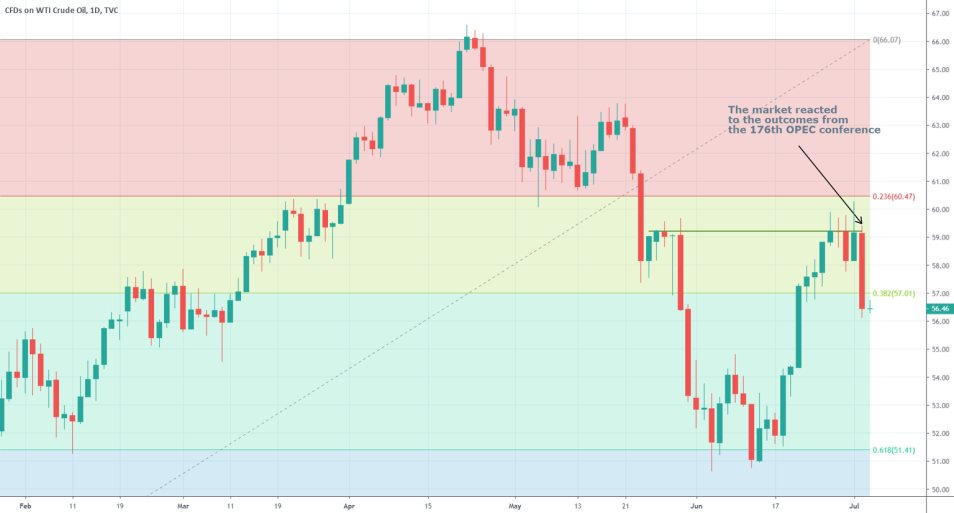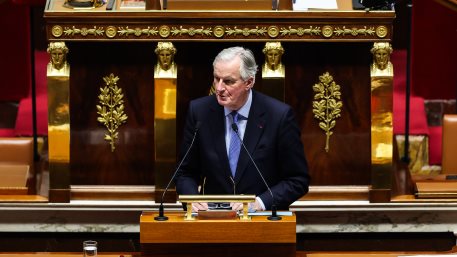
The price of the crude oil fell with 4.56% yesterday after the end of the two-day long Conference between the representatives of OPEC member countries and the non-OPEC ministerial meeting.
In our weekly expectations analysis from Monday (you can read the full article here), we argued that OPEC would likely be concerned with the recent trend of rapidly rising oil prices, which might be enough to compel the policymakers within the organization’s secretariat to implement direct decisions to subvert these recent developments and lower the prices. Following the conclusion of the meeting, a statement was released to the media in which it was said that:
“It was noted that economic bearishness is now increasingly prevalent, with major challenges and mounting uncertainties related to ongoing trade negotiations, monetary policy developments, as well as geopolitical issues” [source]
Even though, both the Joint Technical Committee (JTC) and the Joint Ministerial Monitoring Committee (JMMC) did not directly address the escalated tensions with Iran and the recent attacks against oil tankers in the Gulf of Oman, the secretariat delivered a significantly compelling argument to reflect on the overall geopolitical situation concerning the oil market.
After the presentation of OPEC’s general observations in regards to the recent developments in global trade, monetary policies and international relations, the governing bodies commented on the resulting supply and demand imbalances, as well as their economic projections until the end of the year:
“It was also observed that oil demand growth for 2019 has been revised down since the last meeting of the Conference to now stand at 1.14 million barrels a day (mb/d), and non-OPEC supply is expected to grow at a robust pace of 2.14 mb/d, year-on-year.[…] In view of the current fundamentals and the consensus view on the outlook for the remainder of 2019, the Conference decided to extend the voluntary production adjustments agreed at the 175th Meeting of the OPEC Conference for an additional period of nine months […].”
A probing examination of the presented conclusions from the meeting reveals that OPEC implemented an arguably less-resolute stance than previously anticipated. Members decided to extend the period of voluntary production adjustment to address the expected robust growth of non-OPEC supply, despite the anticipated future slumps in aggregate demand.
Overall, the reluctance of OPEC to implement any transformational and decisive decisions to subvert the actions of other non-member states attests to the organization’s diminished market power. Furthermore, the expected continuation of the trend of falling aggregate demand coupled with the seemingly uninterrupted growth of non-OPEC supply, which demonstrates the organization’s ineptitude to subvert such actions in any way, creates an imbalance of market pressures.
Such a disequilibrium of observed falling demand and rising supply drove the prices of oil downwards during yesterday’s trading session, as the major resistance level at $59.07, which was also outlined in Monday’s weekly expectations analysis, held. As a result of that, the price bounced off the resistance level, after failing to break above it during the four previous trading sessions, and plummeted with $2.67 to $56.46, and thus, broke below the 38.2% Fibonacci support level.





















